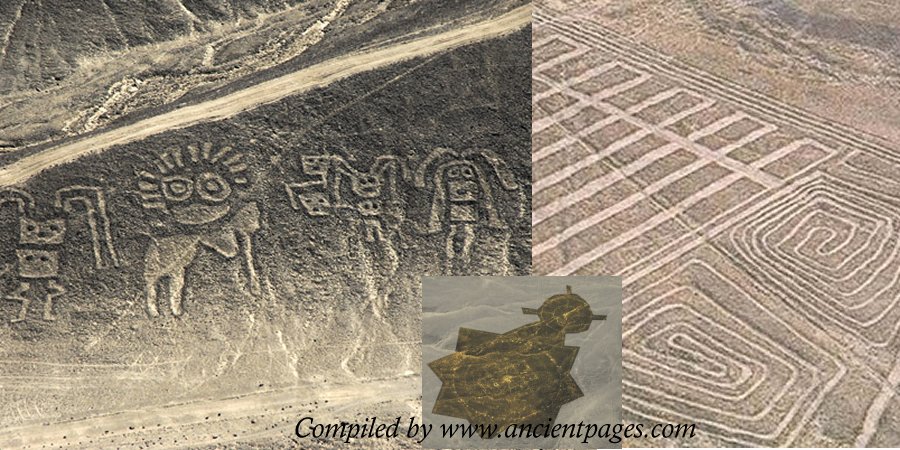Puzzling Palpa Lines In Peru Made By The Paracas Culture Are Even Older Than The Nazca Lines
Ellen Lloyd - AncientPage.com - The enigmatic Palpa lines in Peru are not as famous as the Nazca Lines, but these puzzling lines and geoglyphs that can only be properly viewed from the air are equally fascinating.
Archaeological examinations reveal the Palpa lines are older than the Nazca lines and were most likely created by the Paracas culture. This Andean society existed between about 800 BCE and 100 BCE in what today is the Ica Region of Peru.
The Palpa lines are located between Sacramento, Pinchango, and Llipata. The purpose of the lines and geoglyphs is unknown. There are as many as 600 geoglyphs of giant size. They represent a series of human and animal zoomorphic figures, including the Familia Real (Royal Family), a group of eight figures on a hillside.
Like the Nazca lines, these ancient carvings are regarded as one of archaeology's greatest enigmas because of their quantity, nature, size, and continuity. Scientists suggest the geoglyphs had ritual astronomical functions.
Palpa Lines and Geoglyphs, Peru. Credit: Adobe Stock - javarman
These giant geoglyphs and lines must have been important to our ancestors, and they were undoubtedly not easy to create. Many consider the figures an extraordinary example of the traditional and millenary magical-religious world of the ancient pre-Hispanic societies that flourished in Peru.
The mysterious Candelabrum located about 130 miles from the Nazca Plain, is one of the most enigmatic ancient giant ground drawings in the world.
Paracas Candelabra. Image credit: Alex Zanuccoli - flickr.com
The Candelabra is 595 feet long and resembles a candlestick, seen from as far as 12 miles to sea. Its creators believed it was important that the ground drawing must be visible from the air. Who made it and why? It is a question no one has been able to answer so far.
It’s important to note that similar geoglyphs have been found in North America as well. We wrote on Ancient Pages that over 300 remarkable intaglios exist in the American Southwest and adjacent Mexico.
The most famous are the Blythe Intaglios, located west of the Colorado River about 15 miles north of Blythe, California.
Blythe Intaglios. Image credit: Rsfinlayson - CC BY-SA 4.0
Here, we come across gigantic human and animal figures carved on the ground. Just like Peru's wonderful and intriguing Nazca lines, these figures can only be adequately seen from the air, which is why white men didn't discover them until the 20th century.
According to the stories told by modern-day Mohave and Quechan Indians, the human figures represent Mastamho, the Creator of Earth and all Life, while the animal figures represent Hatakulya, one of two mountain lions who helped in the Creation.
" In the Mohave myth, there are two totemic lion figures, helpers to Mustamho (the creator), who are known as Numeta and Hatakulya. Those lion figures are present in numerous petroglyph locations. Numeta is normally depicted with his tail up in the air while Hatakulya has his tail down.." (Johnson, 1986)
Recently, researchers found a new giant geoglyph of orca with mysterious symbols and a ‘trophy head’ in the Nazca Desert.
The figures are difficult to discover because they can only be properly from the air. We can only wonder how many more giant geoglyphs are hiding in front of our eyes.
Updated on October 29, 2023
Written by Ellen Lloyd – AncientPages.com
Copyright © AncientPages.com All rights reserved. This material may not be published, broadcast, rewritten or redistributed in whole or part without the express written permission of AncientPages.com
Expand for referencesAlex Patterson, A Field Guide to Rock Art Symbols of the Greater Southwest
More From Ancient Pages
-
 How Greenland Got The ‘Wrong’ Name Thanks To Viking Erik The Red
Ancient History Facts | Mar 21, 2017
How Greenland Got The ‘Wrong’ Name Thanks To Viking Erik The Red
Ancient History Facts | Mar 21, 2017 -
 Ancient Books, Scrolls And Manuscripts Burned By Church And Evil Emperors
Artifacts | Aug 27, 2018
Ancient Books, Scrolls And Manuscripts Burned By Church And Evil Emperors
Artifacts | Aug 27, 2018 -
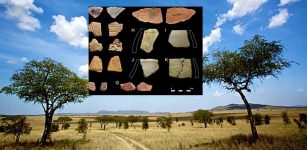 Evidence For Milk, Meat, And Plants In Prehistoric Kenya And Tanzania
Archaeology | Apr 15, 2020
Evidence For Milk, Meat, And Plants In Prehistoric Kenya And Tanzania
Archaeology | Apr 15, 2020 -
 Why Is Rome Called ‘The Eternal City’?
Ancient History Facts | May 16, 2024
Why Is Rome Called ‘The Eternal City’?
Ancient History Facts | May 16, 2024 -
 Evidence Of An Ancient Roman Oracle Cult Found In Ostia, Italy
Archaeology | Jun 18, 2024
Evidence Of An Ancient Roman Oracle Cult Found In Ostia, Italy
Archaeology | Jun 18, 2024 -
 World’s First ‘Cash Machine’ Discovered In A Wall Of An Ancient Bakery
Archaeology | Apr 1, 2022
World’s First ‘Cash Machine’ Discovered In A Wall Of An Ancient Bakery
Archaeology | Apr 1, 2022 -
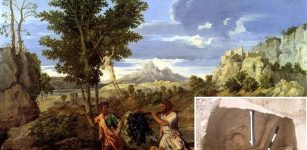 Mysterious Biblical Canaanites – What Ancient DNA Reveals About Their Fate
Archaeology | Jul 28, 2017
Mysterious Biblical Canaanites – What Ancient DNA Reveals About Their Fate
Archaeology | Jul 28, 2017 -
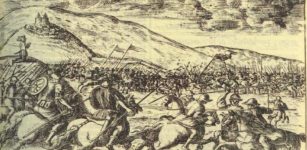 On this day in history: The Battle of the Frigidus – Sep 5, 394 AD
News | Sep 5, 2015
On this day in history: The Battle of the Frigidus – Sep 5, 394 AD
News | Sep 5, 2015 -
 The First ‘Viking’ Was A Bronze Age Man
Civilizations | Jul 26, 2024
The First ‘Viking’ Was A Bronze Age Man
Civilizations | Jul 26, 2024 -
 Chilean Mummies Clad In Red Poison Dresses – Evidence Of A Unique Inca Ritual
Archaeology | Jul 28, 2018
Chilean Mummies Clad In Red Poison Dresses – Evidence Of A Unique Inca Ritual
Archaeology | Jul 28, 2018 -
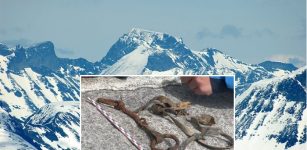 Viking Age Horse Bridle Found Under The Ice 2,000 Meters Above Sea Level
Archaeology | Sep 28, 2023
Viking Age Horse Bridle Found Under The Ice 2,000 Meters Above Sea Level
Archaeology | Sep 28, 2023 -
 Mysterious, Well-Preserved Ancient Foreign Mummies Found On Remote Islands In North America
Featured Stories | Jan 5, 2025
Mysterious, Well-Preserved Ancient Foreign Mummies Found On Remote Islands In North America
Featured Stories | Jan 5, 2025 -
 Ancient Greeks Had Great Understanding Of Weather And Climate
Civilizations | Sep 7, 2015
Ancient Greeks Had Great Understanding Of Weather And Climate
Civilizations | Sep 7, 2015 -
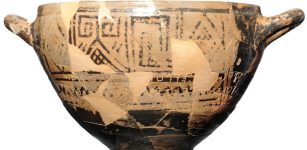 Mystery Of The Tomb Of Nestor’s Cup Unraveled
Archaeology | Oct 6, 2021
Mystery Of The Tomb Of Nestor’s Cup Unraveled
Archaeology | Oct 6, 2021 -
 Timeline Of Greek Dark Ages And Renaissance Is Wrong, New Research Shows
Featured Stories | Nov 13, 2024
Timeline Of Greek Dark Ages And Renaissance Is Wrong, New Research Shows
Featured Stories | Nov 13, 2024 -
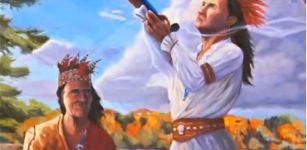 Hiawatha And The Legendary Great Peacemaker – Native American Heroes Who Founded The League Of The Iroquois
Featured Stories | Feb 25, 2019
Hiawatha And The Legendary Great Peacemaker – Native American Heroes Who Founded The League Of The Iroquois
Featured Stories | Feb 25, 2019 -
 Ancient Egyptian Cosmetics – Why Was It So Important To Both Men And Women?
Ancient History Facts | May 19, 2020
Ancient Egyptian Cosmetics – Why Was It So Important To Both Men And Women?
Ancient History Facts | May 19, 2020 -
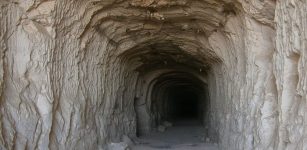 Ancient Superhighways: 12,000-Year-Old Massive Underground Tunnels From Scotland To Turkey
Featured Stories | Jul 19, 2015
Ancient Superhighways: 12,000-Year-Old Massive Underground Tunnels From Scotland To Turkey
Featured Stories | Jul 19, 2015 -
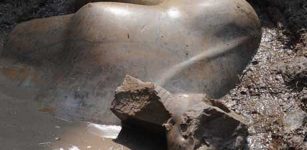 Two 19th Dynasty Royal Statues Unearthed At Ancient Site Of Heliopolis, Cairo, Egypt
Archaeology | Mar 11, 2017
Two 19th Dynasty Royal Statues Unearthed At Ancient Site Of Heliopolis, Cairo, Egypt
Archaeology | Mar 11, 2017 -
 DNA Reveals – One Of Sunken Warship Vasa’s Crewmen Was A Woman
Archaeology | Apr 4, 2023
DNA Reveals – One Of Sunken Warship Vasa’s Crewmen Was A Woman
Archaeology | Apr 4, 2023

